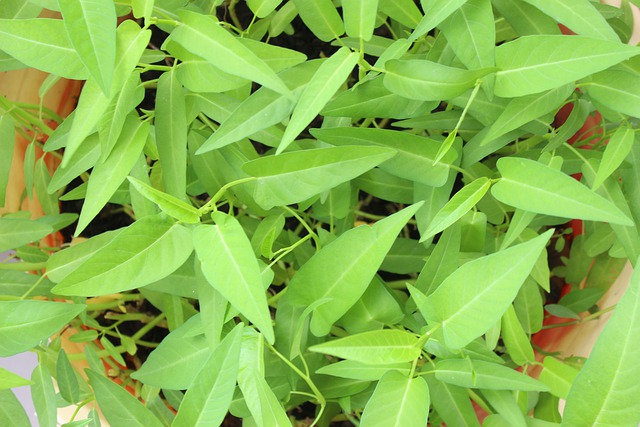The monsoon in Bengaluru has its own charm, more so when we are able to source some remote greens and enjoy a local recipe thoughtfully chosen. I thank my domestic help for introducing me to this delectable nutritious green.
This accidental indulgence in ragi mudde [the traditional finger millet balls; the famed South Indian recipe], submerged in a hot, tangy soup of mashed greens was a delectable experience similar to an occasional siesta, at noon, during a hectic day — a new, enlivening, refreshingly tingling victual that awakens our taste buds in a manner born.
We bring to you yet another flavoursome delicacy with useful therapeutic benefits as a nutritional food — one edible, aquatic leafy green that is popular worldwide. You guessed it right — the water spinach, or watercress, kangkong greens, swamp cabbage, or the Chinese water spinach.
The green allure’s botanical nomenclature is Ipomea aquatica. It grows, true to its name in water, watery, or marshy, soils. It is called anne soppu in Kannada, kalambi/shataparni in Sanskrit, kalmi saag in Hindi, kolmi shaak in Bengali, sarkaraivalli in Tamil, nalini bhaji in Gujarati, nalichi in Marathi, and tutikura in Telugu.
Uses
Ayurvedic texts extol kalambi as a leafy green with special effects on the reproductive system, including optimising the quality of sperm and the ovum [egg].
It is also believed to enhance lactation in puerperal women.
The leaf juice is administered to induce emesis [vomiting] in cases of arsenic poisoning and opium overdose.
Folklore practitioners utilise the gorund tender buds as a medicinal application for ringworm and other skin ailments.
Oral administration of leaf juice acts as an anti-parasitic medication; it is also useful in treating haemorrhoids [piles] and neurological deficits.
The plant is rich in folates [14 per cent], vitamin A [6600IU/100gm], vitamin C [55mg/100gm], the B-vitamins, viz., riboflavin [8 per cent], niacin [5.5 per cent], pyridoxine [7 per cent], aside from iron [21 per cent], calcium [8 per cent], magnesium [18 per cent], and phosphorus [5.5 per cent], including s-methylmethionine [a vitamin].
It is, doubtless, much more than Popeye’s all-time favourite — a super-nutritional food beyond compare.
The Water Spinach Smorgasbord
The best thing to do is to incorporate water spinach in food — to derive its nutrient benefits.
- Edible raw — as a salad, or addition to any salad
- Dal/sambar/kootu — The roasted and cooked shoots are amalgamated in a rich gravy of Indian spices with lentils
- Ulsoppu saaru [the salty-tangy soup] — Ipomea leaves, onions, tomatoes, garlic, tamarind, green chillies, ground spices, oil, and salt are all cooked together, mashed well manually, seasoned and traditionally served hot as an accompaniment for ragi balls
- Sasive/gojju — Roasted greens are cooked with ground coconut and mustard, seasoned, and served as an accompaniment to hot rice as a nutritional food
- Fritters — A rice-based batter with spices and chopped water cress is deep fried and served as a snack with a hot beverage
- Soup — Cooked and ground greens are spiced up with pepper, salted, and garnished with fresh cream, and served as an appetiser
- Kalmi saag stir fry — This is seasoned and stir fried with water spinach leaves. Garlic seasoned with kangkong is a popular local delicacy in the Philippines.
- Kangkong greens in different sauces — Stir fried and served with oyster sauce/garlic sauce gravy/ preserved soy/soy sauce. Served with hot rice as a nutritional food
- Kangkong greens. When added to non-vegetarian delicacies, including fish, chicken, and pork, they not only enhance flavour, they also provide value-added nutrition.

